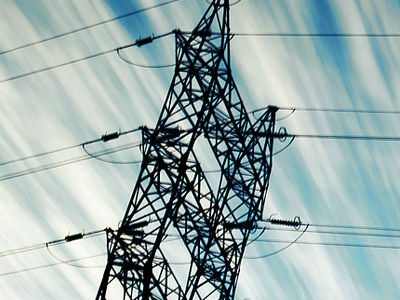
Remember These Tips When Shopping For Data Center Power
The following excerpt is from Datacate’s Colocation Survival Guide – get the full Guide here.
Determining accurate power requirements for a colocation is a task that most frequently stymies would-be colocation projects, and that’s unfortunate, as power is one of the chief drivers of cost in the data center. Raw price per kilowatt aside, the resources to condition power, provide backup for it (in the form of battery arrays and generators), deliver and monitor it, and to cool the heat that results from its use, all conspire to make data center power very costly to deliver, and consequently it is the most expensive power you will ever buy. Because of this, providers are unlikely to do much in the way of providing discounts on power. You’ll want to have a good grasp of the amount of power that you really need as you are almost certainly going to pay list price for it. Here are a few tips to keep in mind when calculating, or shopping for, data center power:
Compare Apples To Apples
Power can be specified as either rated or de-rated. Rated power is the absolute maximum peak power a circuit can handle, above which a breaker trip will happen – example: a 20 ampere circuit must experience a breaker trip if the load exceeds 20 amps, even momentarily. De-rated power is the safe maximum continuous power rating for a circuit. Per standards adopted by the National Electrical Manufacturers Association (NEMA), de-rated power should be not more than 80% of rated power. So on a circuit rated for 20 amps, you may draw no more than 16 amps on a continuous basis.
The power ratings that you get from your equipment manufacturer, from online planning tools, or from performing your own measurements with an appliance power meter, will all be de-rated power. Be sure to compare apples to apples when shopping your colocation project to providers – if you give them your de-rated power requirements, but they quote rated power, you’ll be underpowered by 25%! Always specify rated or de-rated power in your request, and make sure they do the same in their quote.
Count Your Connections
It’s an easy point to overlook, but you need to ensure that the quantity of power connections you require will be adequately addressed. In the case of smaller shared colocation projects, ask how many plugs on the cabinet PDU will be assigned to you. For larger colocations in which you’ll be getting one or more full circuits, providing the PDU yourself may be an option, or a requirement (it varies by facility). A typical full-circuit PDU can has as few as eight power sockets or as many as 24, so be mindful of that aspect. You might be inclined to think that you can plug another power strip into the cabinet PDU to gain more outlets. Wrong! This is called ‘daisy chaining’, and it is against fire code.
TIP: Need more connections than what your power strip or PDU can provider? Use “Y” power cords, which allow connection of two (or more) devices to one outlet. These cords enable you to at least double your power connections, and they are allowed by fire and electrical codes.
Use Watts If You Don’t Care About Volts
To this day it is common practice to inform a prospective provider or how may amperes you need, and at what line voltage. Most modern computer equipment will automatically adjust to different input voltages. 120V service, like what you find in your home or office, is still quite common, but other input voltages like 208V have gained popularity in the data center in recent years. The laws governing electricity (which we will no delve into here) dictate that the amount of power required to do a given amount of work will not vary regardless of the input voltage, so if you give a provider your power requirements in watts, they can figure out the circuit size required at any given voltage to the get the job done. This gives you some flexibility, and in fact you may find that one option is more economical or allows more room for expansion than another.
Don’t Trust The Power Supply Rating
Every device in your colocation stack that plugs into electrical power will have one or more power supplies with a maximum wattage rating – the rating info will typically be printed right on the device itself. It may be tempting to add up those ratings for all your devices, and declare that total to be your power requirement. Don’t do it! Power supplies, particularly those in servers, are rarely used at their maximum rating in practice. In all likelihood, your power draw is substantially less than the max rating, even during peak usage periods. Instead, get actual sustained and peak power draw data from manufacturer tables, or measure the usage of your devices with a consumer appliance power meter.
